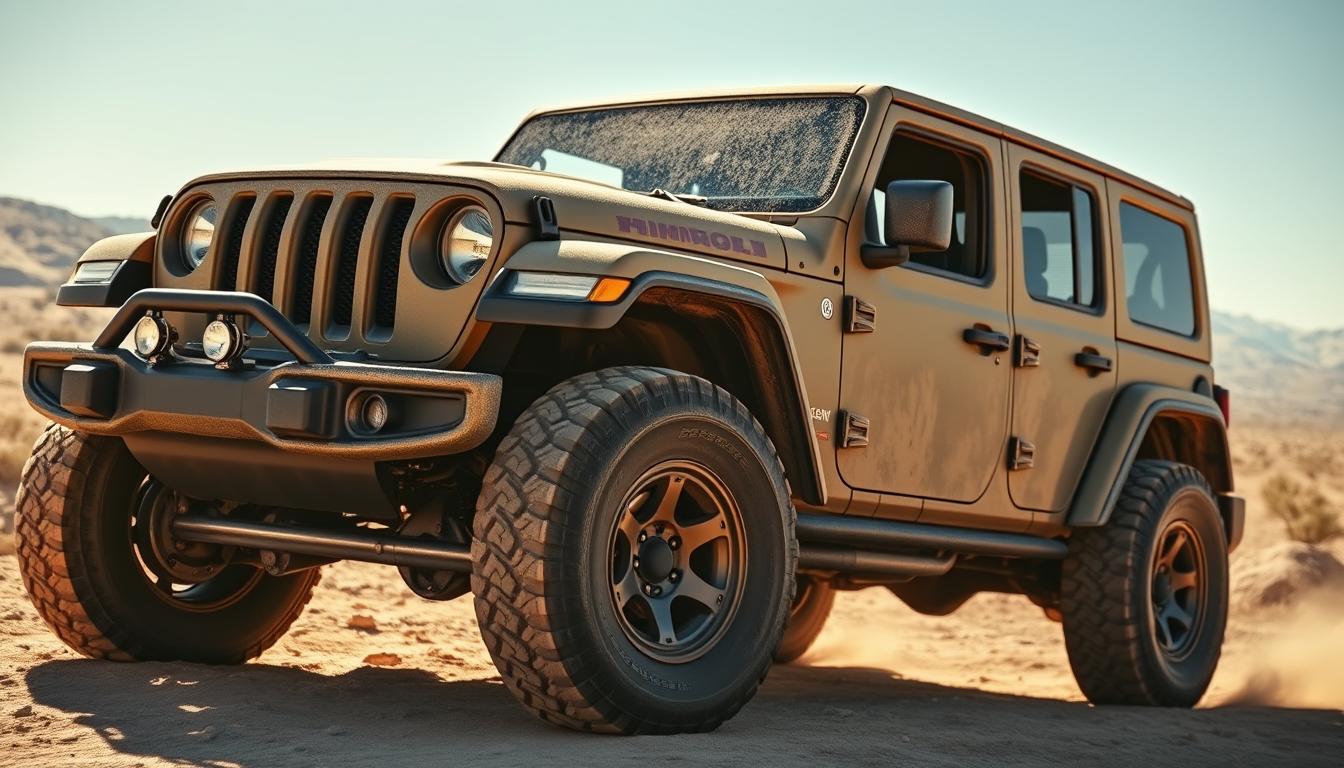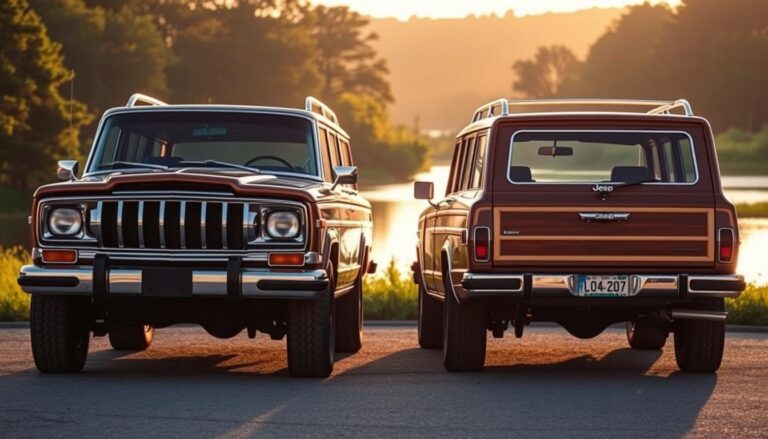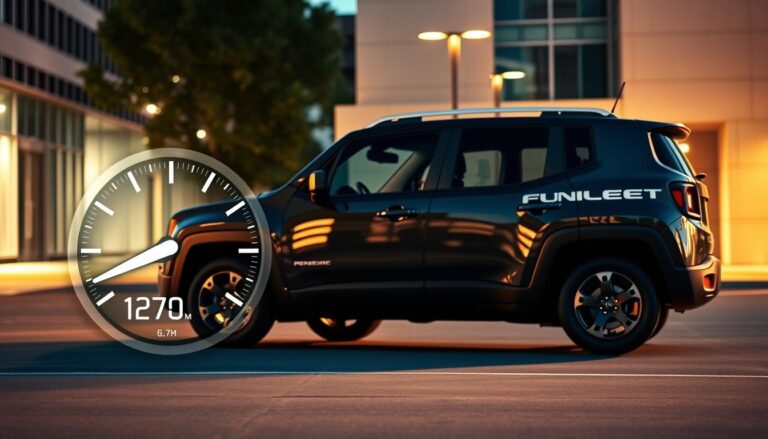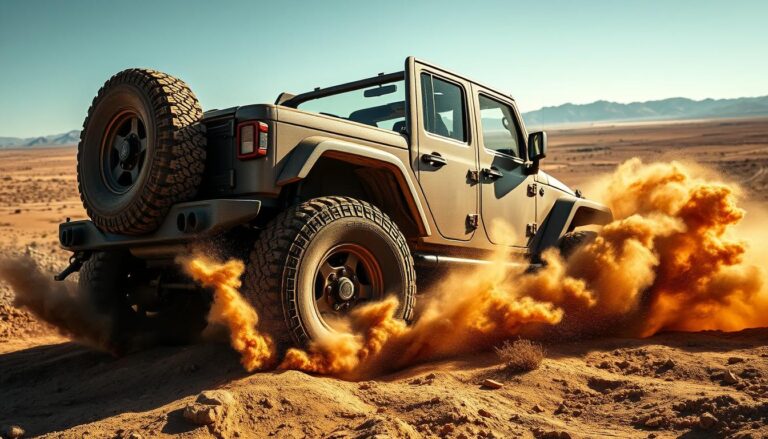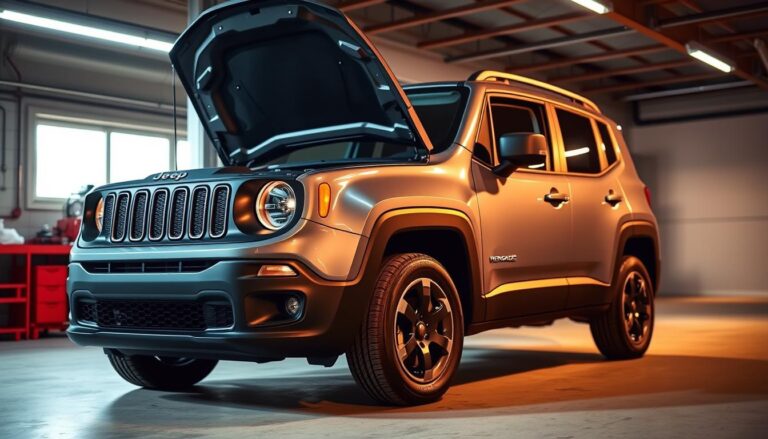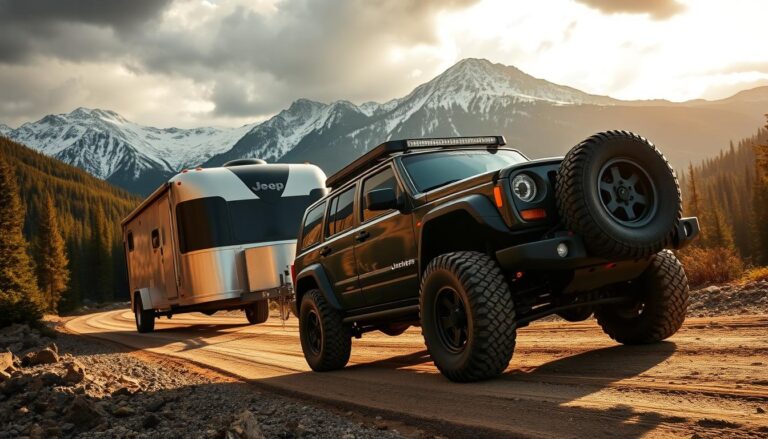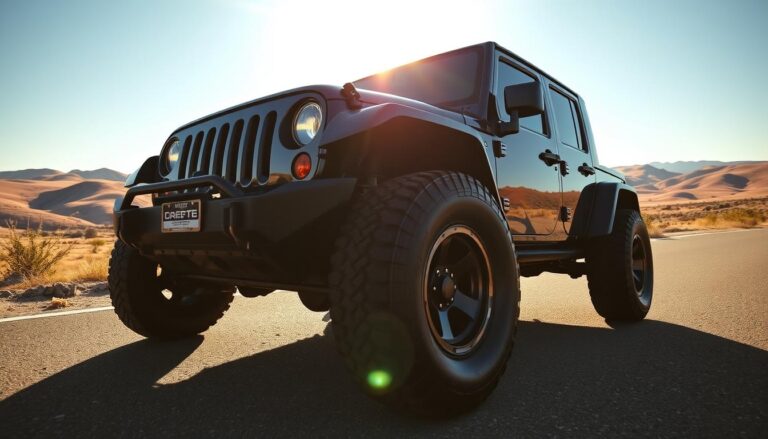The Longevity of Jeep Wranglers: How Many Miles Do They Last?
The Jeep Wrangler is known for being a reliable off-road vehicle. It wins the hearts of those who love adventure and practical drivers. You might wonder how many miles these tough machines can last. The answer might surprise you.
Jeep Wrangler longevity is a big deal in the car world. These vehicles are made to handle tough conditions, from rocky trails to city streets. Their durability is not just marketing talk. It’s a proven fact that makes them popular among outdoor fans and everyday drivers.
Several things affect how long a Wrangler lasts. Keeping it well-maintained, the driving conditions, and the Wrangler’s generation all play a role. Some owners say their Wranglers keep going strong over 200,000 miles. That’s impressive for any car.
This guide will cover all you need to know about Jeep Wrangler longevity. We’ll look at their design, maintenance tips, and why they’re a reliable choice. You’ll see why these vehicles are more than just a way to get around. They’re a lasting investment in reliability and performance.
If you’re thinking about getting a new Wrangler or want to know more about your current one, this article has the info you need. It will help you make a smart choice about these legendary vehicles.
Understanding Jeep Wrangler’s Reputation for Durability
The Jeep Wrangler is a symbol of tough engineering, showing jeep wrangler durability over many years. It’s known as one of the best off-road vehicles, thanks to its long history of great performance and toughness.
Evolution of Wrangler’s Build Quality
The Wrangler’s growth shows a clear path of engineering betterment. Makers have always worked to make the vehicle stronger, using:
- High-strength steel frame construction
- Advanced corrosion-resistant materials
- Precision manufacturing techniques
- Enhanced welding technologies
Core Design Features Contributing to Longevity
Several important design parts make the Wrangler stand out. Solid axles, removable doors, and a body-on-frame design make it very durable in tough places.
| Design Feature | Durability Impact |
|---|---|
| Body-on-Frame Construction | Increased structural strength |
| Solid Front and Rear Axles | Superior off-road performance |
| High-Clearance Suspension | Enhanced terrain adaptability |
Market Position as a Reliable Off-Road Vehicle
The Wrangler’s fame isn’t just talk. It’s often at the top of reliable off-road vehicles, tested in real-world scenarios and loved by fans.
Average Lifespan of a Jeep Wrangler in Miles
Knowing how long a Jeep Wrangler lasts is key for both buyers and owners. Most Wranglers are very durable. They often reach high mileage marks.
Looking into how many miles a Jeep Wrangler can go, we find some interesting facts:
- Average Wranglers last between 150,000 to 250,000 miles
- Models kept in good shape can go over 300,000 miles
- Some owners have driven their Wranglers more than 400,000 miles
How long a Wrangler lasts also depends on its generation. Newer models, with their advanced tech, last longer than older ones.
| Wrangler Generation | Typical Mileage Lifespan |
|---|---|
| TJ (1997-2006) | 150,000-200,000 miles |
| JK (2007-2018) | 200,000-250,000 miles |
| JL (2018-Present) | 250,000-300,000 miles |
Things like regular maintenance, how you drive, and how much you use it affect a Wrangler’s life span.
Factors That Impact Your Wrangler’s Longevity
Knowing what affects a Jeep Wrangler’s life is key to keeping it running long. Many things work together to decide how long your vehicle lasts. Owners can manage these factors by taking good care and making smart choices.
Several important factors directly affect your Wrangler’s performance and reliability over time.
Driving Conditions and Usage Patterns
Driving in different places can really affect your Wrangler. Those who love off-roading face different wear than city drivers.
- Off-road driving puts more stress on the suspension and undercarriage.
- City driving with lots of stops and starts has its own challenges.
- Driving on the highway usually puts less strain on the vehicle.
Maintenance Schedule Adherence
Following the recommended maintenance schedule is very important for your Wrangler’s life.
| Maintenance Interval | Critical Actions | Impact on Longevity |
|---|---|---|
| Every 3,000 miles | Oil change | Prevents engine wear |
| Every 15,000 miles | Comprehensive vehicle inspection | Identifies issues early |
| Every 30,000 miles | Transmission fluid replacement | Ensures smooth gear transitions |
Environmental Factors
The climate and where you live can really affect your Wrangler. Extreme weather, salt, and the terrain can make it wear out faster.
- Places near the sea with lots of salt can cause corrosion.
- Hot desert areas can be tough on the cooling system.
- Driving in mountains can stress the suspension.
Using smart maintenance tips can help protect your Wrangler from environmental damage. This way, you can make it last longer.
How Many Miles Do Jeep Wranglers Last: A Comprehensive Analysis
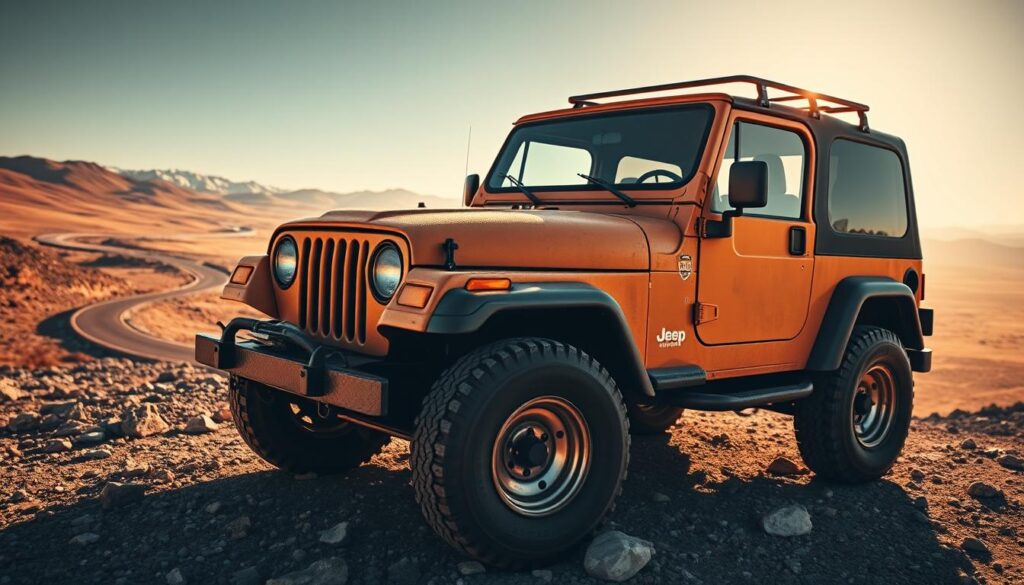
Jeep Wranglers are known for their durability. They can go a long way, making them stand out among SUVs. Owners often find these vehicles to be remarkably long-lasting.
The lifespan of a Jeep Wrangler depends on several key factors:
- Consistent maintenance
- Driving conditions
- Vehicle generation
- Owner’s care and usage patterns
Experts say that with regular care, Wranglers can easily hit 200,000 miles. Some Wranglers have even reached 300,000 miles or more.
| Wrangler Generation | Average Lifespan (Miles) | Maintenance Impact |
|---|---|---|
| TJ (1997-2006) | 180,000-250,000 | High with regular service |
| JK (2007-2018) | 200,000-275,000 | Excellent with proper care |
| JL (2018-Present) | 250,000-300,000 | Exceptional engineering |
Driving environment, maintenance, and how you treat your Wrangler all play a big role. Regular oil changes and addressing issues quickly help. Avoiding harsh driving conditions also helps extend your Wrangler’s life.
While experiences differ, Wranglers are known for their longevity. With the right care, they become reliable friends for many, many miles.
Common Wear Points in High-Mileage Wranglers
Jeep Wranglers are known for their toughness, but they do wear out over time. Knowing where high-mileage Jeep Wranglers tend to wear out helps owners keep their vehicles running well. This can also save money on repairs.
High-mileage Jeep owners should watch out for several key areas. These areas can affect how long the Jeep lasts. Catching problems early and taking care of your Jeep can make it last longer.
Engine and Transmission Challenges
The engine and transmission are the heart of a high-mileage Jeep Wrangler. Common problems include:
- Oil leaks around gaskets and seals
- Worn cylinder heads
- Transmission fluid degradation
- Clutch wear in manual transmission models
Suspension System Durability
Suspension parts take a lot of stress, mainly when driving off-road. Key issues include:
- Shock absorber deterioration
- Ball joint wear
- Control arm bushings breakdown
- Leaf spring fatigue
Body and Frame Integrity
High-mileage Wranglers need strong bodies and frames. Problems can include:
- Rust formation, mainly in the undercarriage
- Frame corrosion
- Body panel wear
- Seal and weatherstripping degradation
| Wear Point | Average Lifespan | Replacement Cost |
|---|---|---|
| Engine Gaskets | 80,000-100,000 miles | $500-$1,500 |
| Transmission | 100,000-150,000 miles | $2,000-$4,000 |
| Suspension Components | 70,000-90,000 miles | $800-$2,000 |
| Frame Rust Prevention | Ongoing maintenance | $200-$500 annually |
Regular checks and maintenance are essential. They help manage wear and ensure your Jeep lasts a long time.
Maintenance Best Practices for Extended Wrangler Life
Keeping your Jeep Wrangler in top shape is key. Regular care extends its life and keeps it running well. Smart maintenance tips can save you money and keep your vehicle running smoothly for years.
Important maintenance practices for your Wrangler include:
- Regular oil changes every 3,000-5,000 miles
- Comprehensive fluid checks and replacements
- Tire rotation and alignment
- Brake system inspection
- Suspension component evaluation
Wranglers need extra care. Removable tops and doors need regular cleaning and lubrication. Make sure to check seals, hinges, and mounting points to avoid damage.
Preventative maintenance is vital. A regular maintenance schedule helps catch issues early. This can save you money in the long run. Here are some key inspection times:
- Monthly visual vehicle inspection
- Quarterly complete system check
- Annual detailed professional evaluation
Keeping track of your Wrangler’s maintenance history is important. It helps predict future needs and keeps your vehicle in top shape. This also helps maintain its value.
Signs Your Wrangler Is Reaching Its Limit
Knowing when your Jeep Wrangler is nearing the end can save you a lot of time and money. Spotting the warning signs early helps you decide what’s best for your vehicle.
Warning Indicators to Watch
Jeep Wrangler owners with experience know certain signs point to serious problems. Look out for:
- Persistent check engine light
- Unusual transmission shifting
- Significant oil consumption
- Extensive rust on frame and undercarriage
- Frequent mechanical breakdowns
Performance Changes Over Time
As your Jeep Wrangler gets older, it won’t perform as well. You might see slower acceleration, less fuel efficiency, and louder engine sounds. These changes are normal but can mean your vehicle is nearing its limits.
Cost-Benefit Analysis of Repairs
If repair costs are more than your vehicle’s value, it’s time to think about getting a new one. For high-mileage Jeeps, if you spend over 50% of its value on repairs each year, it’s wise to look into buying a new Wrangler.
| Mileage Range | Typical Repair Costs | Recommendation |
|---|---|---|
| 100,000-150,000 miles | $500-$1,500 annually | Monitor closely |
| 150,000-200,000 miles | $1,500-$3,000 annually | Consider replacement |
| 200,000+ miles | $3,000-$5,000+ annually | Strongly recommend replacement |
Knowing these signs helps you make smart choices about your Jeep Wrangler’s future.
Comparing Wrangler Longevity Across Different Generations
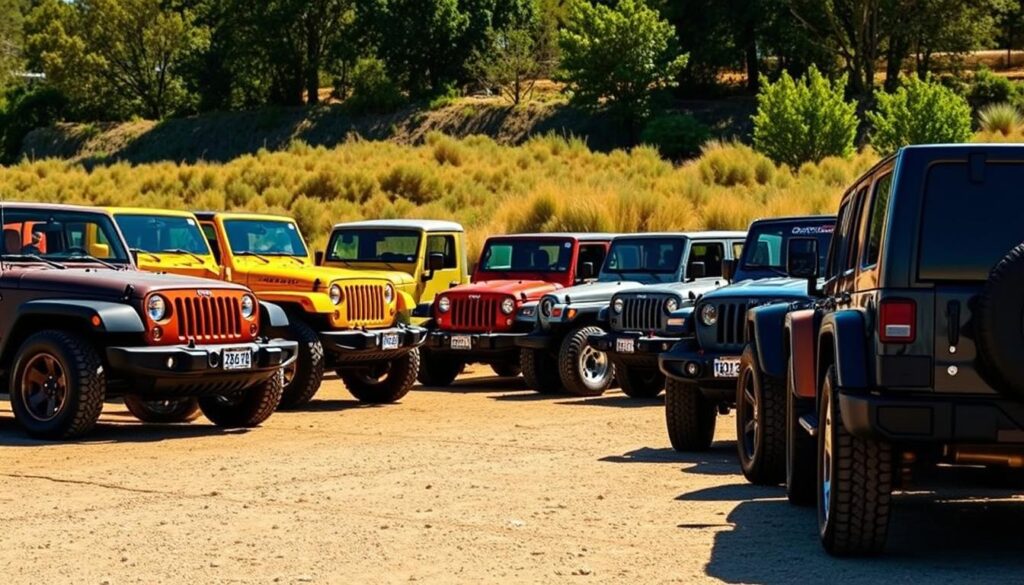
Jeep Wranglers are known for lasting a long time. Each new generation brings better features that make them last even longer. This helps buyers choose the right Wrangler for them.
Each Wrangler generation has made big steps forward in how long they last and how well they perform:
- YJ Generation (1987-1995): The first modern Wrangler with square headlights, known for basic reliability but less refined engineering
- TJ Generation (1997-2006): Introduced coil-spring suspension, dramatically improving ride quality and vehicle longevity
- JK Generation (2007-2018): Expanded body styles, more robust chassis, significantly enhanced structural integrity
- JL Generation (2018-Present): Advanced lightweight materials, improved powertrain efficiency
People who own Jeep Wranglers say the newer ones last longer. The JK and JL generations can go up to 200,000 miles with good care. This is a big jump from the older models.
| Generation | Average Lifespan | Key Durability Features |
|---|---|---|
| YJ | 150,000 miles | Basic frame, simple mechanics |
| TJ | 175,000 miles | Improved suspension, better build quality |
| JK | 200,000 miles | Stronger chassis, advanced materials |
| JL | 250,000 miles | Lightweight design, enhanced powertrain |
Knowing about these changes shows how Jeep has made the Wrangler better over time. They’ve worked hard to make it last longer and perform better.
Real Owner Experiences with High-Mileage Wranglers
Jeep Wranglers are known for their toughness among off-road fans and daily drivers. These high-mileage jeeps share amazing stories of lasting power and performance. They go beyond what most cars can do.
Success Stories from Long-Lasting Jeeps
Wrangler owners share amazing stories of their long-lasting vehicles. Many have driven theirs over 200,000 miles with the right care. Their tales show the Wrangler’s strong build and smart design.
- Regular maintenance is key to extending vehicle life
- Careful driving habits contribute to longevity
- Quality parts make a significant difference
Navigating Common Challenges
Even tough Wranglers face certain issues. Owners say keeping up with maintenance helps avoid big problems.
- Watch for suspension wear in older models
- Monitor transmission fluid regularly
- Check for rust in critical areas
Real-life stories show that with the right care, high-mileage jeeps can keep going strong for years. It’s all about knowing your vehicle’s needs and acting fast.
Tip: Document your Wrangler’s maintenance history to track its performance and future needs.
Investment Value and Resale Considerations
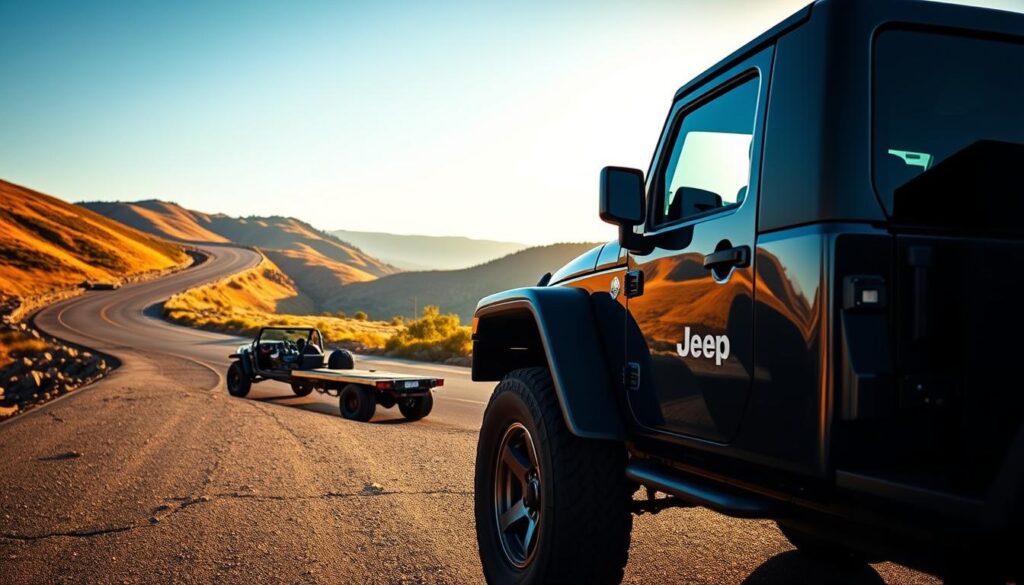
Jeep Wranglers are a smart investment in the car market. They last long, keeping their value high compared to other SUVs. People see the long-term worth of a Wrangler.
The value of a Wrangler depends on a few key things:
- Consistent maintenance records
- Low to moderate mileage
- Minimal exterior and interior damage
- Original factory components
Wranglers lose value slower than many other cars. A well-kept Wrangler can keep up to 60% of its original value after five years. This is rare in the car world.
| Vehicle Age | Typical Resale Value |
|---|---|
| 2-3 Years | 85-90% |
| 4-5 Years | 65-75% |
| 6-7 Years | 50-60% |
Buying a slightly used Wrangler is a wise choice. They last long, are well-made, and are a good financial pick for car lovers and everyday drivers.
Tips for Purchasing a Used High-Mileage Wrangler
Buying a used Jeep Wrangler with high miles needs careful thought. These vehicles are great for off-road adventures if you know what to check. This ensures you’re making a smart buy.
When looking at used Wranglers, pay attention to a few important areas:
- Check the vehicle’s complete maintenance history
- Inspect critical mechanical components thoroughly
- Assess frame and body condition for rust or damage
- Review past ownership and accident reports
Key areas to examine in high-mileage jeeps include:
- Undercarriage inspection: Look for significant wear or corrosion
- Engine performance: Check for unusual sounds or leaks
- Suspension components: Verify shock absorbers and bushings integrity
Getting a professional pre-purchase inspection is wise. Mechanics who know off-road vehicles well can spot hidden problems. They give you a full report.
Plan for any repairs or maintenance costs when you buy. Some Wranglers might need a lot of work to run well again.
Ask for a detailed vehicle history report and check the odometer against service records. Clear records mean you’re investing in a reliable Jeep Wrangler.
Modifications That Can Extend Your Wrangler’s Life
Jeep Wranglers are known for their toughness. But, making smart changes can really help them last longer. Upgrades that are well-chosen can boost performance and guard against early damage.
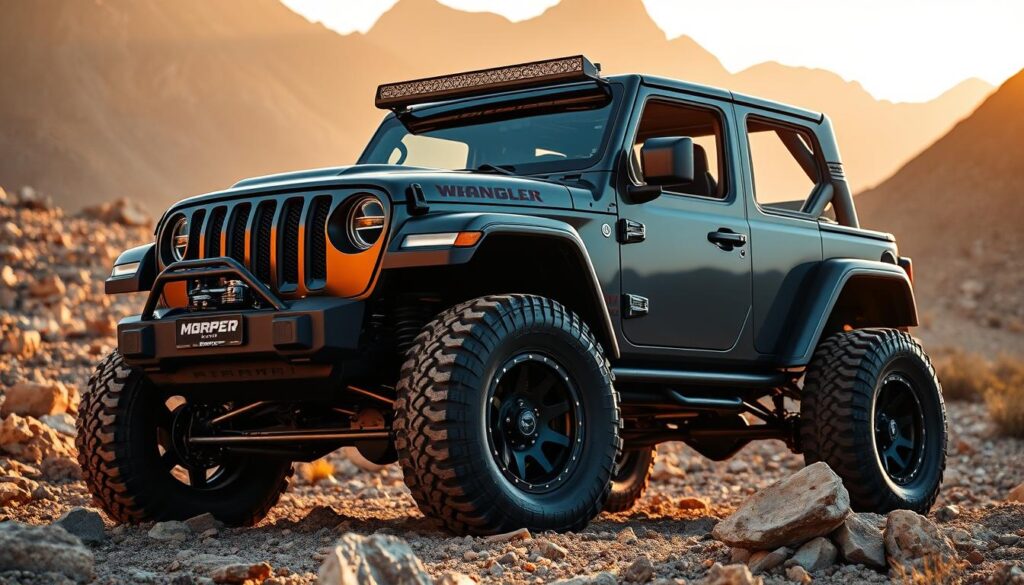
Those who follow jeep maintenance tips know that the right changes can make a big difference. It’s important to pick upgrades that are useful and don’t harm the Wrangler’s reliability.
Performance Upgrades for Longevity
Upgrades for better performance can ease the load on important parts. This makes your vehicle run more smoothly. Here are some smart choices:
- High-flow air intake systems to improve engine breathing
- Enhanced cooling systems to regulate engine temperature
- Performance chip tuning for optimized fuel efficiency
- Upgraded suspension components for reduced mechanical strain
Protective Modifications for Extended Life
Protecting your Wrangler from the elements and rough terrain is key to keeping it running longer. Important protective changes include:
- Robust skid plates to protect undercarriage
- Improved sealing and rustproofing
- Heavy-duty rock rails
- Enhanced wheel well liners
Pro tip: Always consult professional mechanics when planning significant modifications to ensure compatibility and maintain warranty conditions.
Conclusion
The jeep wrangler lifespan is more than just miles. It shows a commitment to strong engineering and smart care. Owners who know how many miles a jeep wrangler lasts can make it last longer with the right care.
Every Wrangler has the chance to last a long time if treated right. The main things that affect its performance are regular service, knowing the environment, and fixing problems early. Drivers who check their Wrangler often and do maintenance can make it last longer than expected.
A Jeep Wrangler is more than a car; it’s a reliable ride. While results can vary, most well-kept Wranglers can go over 200,000 miles. By sticking to service schedules, watching important systems, and fixing issues fast, owners can make their Wrangler a trusted friend for many adventures.
Long-lasting vehicles come from great engineering and owner commitment. Jeep Wranglers prove this, lasting longer than most cars. They give drivers a solid base for exploring and daily driving.

